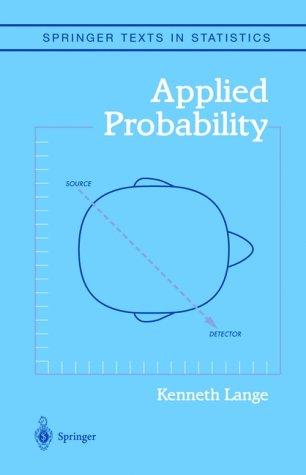Consider a nuclear family in which one parent is affected by an autosomal dominant disease [11]. If
Question:
Consider a nuclear family in which one parent is affected by an autosomal dominant disease [11]. If the affected parent is heterozygous at a codominant marker locus, the normal parent is homozygous at the marker locus, and the number of children n ≥ 2, then the family is informative for linkage. Because of the phase ambiguity in the affected parent, we can split the children of the family into two disjoint sets of size k and n − k, the first set consisting of recombinant children and the second set consisting of nonrecombinant children, or vice versa.
Show that the likelihood of the family is L(θ) = 1 2
θk(1 − θ)
n−k +
1 2
θn−k(1 − θ)
k, where θ is the recombination fraction between the disease and marker loci. A harder problem is to characterize the maximum of L(θ) on the interval [0, 1 2 ]. Without loss of generality, take k ≤ n 2 . Then demonstrate that the likelihood curve is unimodal with maximum at θ = 0 when k = 0, at θ = 1 2 when (n − 2k)2 ≤ n, and at θ ∈ (0, 1 2 ) otherwise. (Hints: The case k = 0 can be resolved straightforwardly by inspecting the derivative L
(θ). For the remaining two cases, write L
(θ) = θk−1(1 − θ)n−kg(τ), where g(τ) is a polynomial in τ = θ
1−θ .
From this representation check that θ = 0 is a local minimum of L(θ)
and that θ = 1 2 is a stationary point of L(θ). The maximum of L(θ)
must therefore occur at θ = 1 2 or some other positive root of g(τ).
Use Descartes’ rule of signs [7] and symmetry to limit the number of positive roots of g(τ) on τ ∈ (0, 1], that is, θ ∈ (0, 1 2 ]. Compute L( 1 2 )
to determine the nature of the stationary point θ = 1 2 .)
Step by Step Answer:







